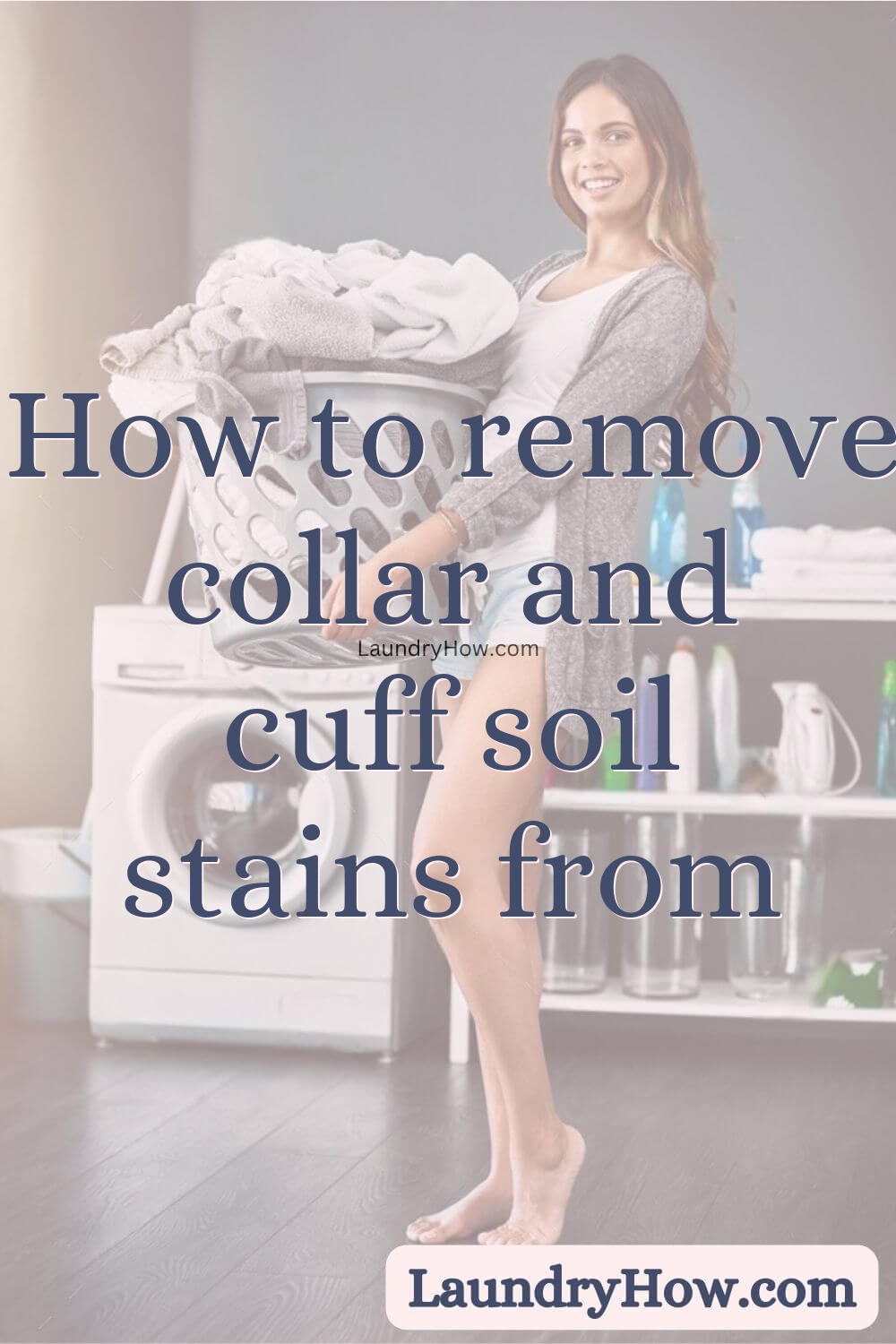We’ve all been there – you wear your favorite shirt or blouse and later notice some grungy buildup around the collar or cuffs. Grease, dirt, oils from your skin, and other grime can leave unsightly marks on your clothes over time.
The good news is that removing these types of stains isn’t too difficult with the right techniques. This guide will walk you through several methods to get your shirts looking fresh again.
What Causes Collar and Cuff Stains
Before jumping into stain removal, let’s quickly cover what leads to collar and cuff stains in the first place:
- Body oils and dirt – The neck and wrist areas come into frequent contact with skin, depositing dirt, oil, and bacteria over time. This buildup leads to yellowing and dinginess around collars and cuffs.
- Hair products – Any hair gel, mousse, or styling products you use can transfer to clothing collars as your hair brushes against them throughout the day. These waxy products then attract dirt and grime.
- Laundry products – If you use too much detergent or fabric softener, residue can remain in the fabric. This attracts more dirt over time.
- Improper washing – Not pretreating stains or washing in cool water can cause dirt, oils, and debris to remain in fabric instead of rinsing away.
Now that you know what leads to pesky collar and cuff stains, let’s go over your game plan to tackle them.
Preparing Stained Items for Treatment
Before doing any intensive stain treatment, start by:
- Brushing any dried debris off the fabric
- Checking the care label and ensuring bleach or other harsh chemicals are OK to use if needed
It’s also a good idea to test stain removers on a discreet area of the clothing first to check for colorfastness. Some older clothes may have dye that leaches out easily.
Easy Home Stain Removal Methods
Many stains around collars and cuffs will lift using products you already have at home:
Dish Soap
A few drops of original blue Dawn dish soap mixed with warm water can work wonders. Apply it to the stained area and gently scrub with a soft toothbrush. Let it soak for 10-20 minutes before laundering as usual. The surfactants in dish soap help lift oil-based stains.
Baking Soda
Baking soda is mildly abrasive and alkaline, making it ideal for breaking down residues. Make a paste by sprinkling some onto a stained collar or cuff and rubbing it in with a damp sponge. Let it sit briefly before washing. For tougher stains, leave the paste on for 30 minutes before laundering.
White Vinegar
Soak stained spots in undiluted white vinegar for 1-2 hours before washing. The acidity in vinegar helps remove buildup in the fabric. You can also add 1 cup vinegar to a regular wash cycle to brighten all your clothes.
Hydrogen Peroxide
Mix equal parts hydrogen peroxide and water in a spray bottle. Lightly mist stained areas of your collar and cuffs and let it sit for at least 60 minutes before washing. It works to lift many types of dirt and stains from fabric.
Lemon Juice
Like vinegar, lemon juice contains acidic compounds that break up oil and mud-based stains. Cut a lemon in half and rub it directly onto stained fabric. Place the clothing in direct sunlight and rinse thoroughly after an hour. The sun helps activate the bleaching properties.
Using a Stain Removal Brush
For really stubborn buildup, use a stain removal brush while applying any cleaning solutions. These specialized brushes have stiff, short plastic bristles designed to get deep into fabric. Work the stain remover into stained spots with a gentle back-and-forth motion. The texture helps lift out embedded grime.
Laundering After Stain Removal
Once you’ve pretreated any visible staining with one of the home solutions, finish up by:
- Washing the item in the warmest water recommended on the care label with an extra rinse cycle
- Avoiding fabric softener, as it can attract dirt over time
- Machine drying instead of hang drying, which minimizes redeposition of oils and debris back onto the clothing
- Ironing with starch, which helps seal in brightness and prevents new stains from setting
With some perseverance, you can get your favorite tops looking brand new again! Prevent future buildup by washing shirts after just a couple wears. Immediately change out of clothing if you spill food or drinks. And consider wearing an undershirt, which takes the brunt of sweat and oils instead.
I hope these tips help you win the battle against dingy collar and cuff stains for good. Let me know if you have any other stubborn laundry dilemmas I can help with!
References
[1] Lafrance, A. (2017, April 12). How to Remove Collar Stains and Prevent Future Buildup. The Spruce. https://www.thespruce.com/remove-collar-stains-prevent-build-up-2146271
[2] Lange, K. (2021, June 29). How to Remove Deodorant, Sweat, and Perfume Stains from Clothing. The Spruce. https://www.thespruce.com/remove-deodorant-and-sweat-stains-2146254
[3] Smith, S. (2020, October 15). How to Remove Dirt Stains From White Shirts. Home Guides | SF Gate. https://homeguides.sfgate.com/remove-dirt-stains-white-shirts-79719.html

Laura has had an enthusiasm for laundry ever since she was a teenager experimenting with wash cycles. She went on study textile science in college before working in product testing.
Soon, Laura found friends and family constantly asking her laundry advice, realizing she had become an unofficial laundry guru. The questions kept coming in, so Laura decided to start sharing laundry tips online to help more people. The enthusiastic response led her start the blog “Laundry How”.
Now in her late thirties, Laura uses Laundry How to tackle all kinds of laundry topics – stains, fabric care, detergents, and more. She provides advice from both her studies and experience testing techniques out firsthand. Laura continues to grow an engaged community of laundry learners, feeling fulfilled empowering people to make laundry an easy, confidence-building ritual rather than a dreaded chore.
